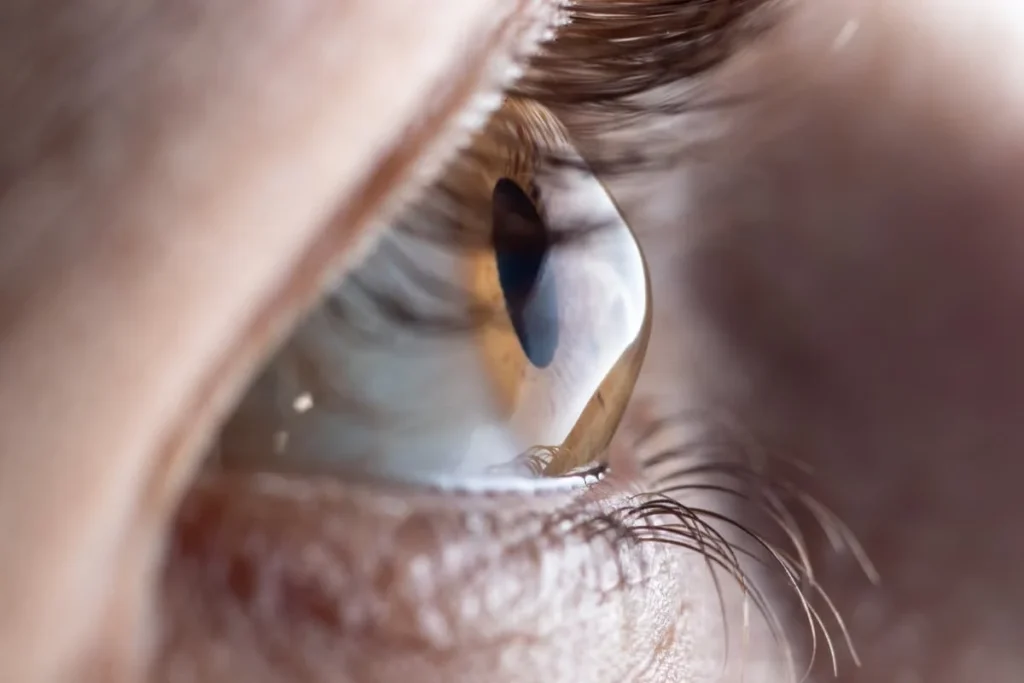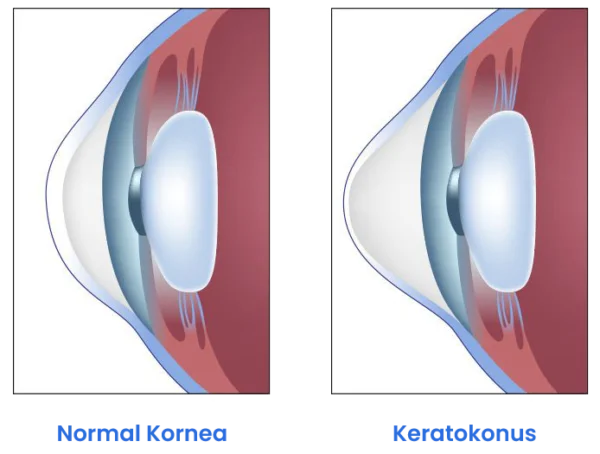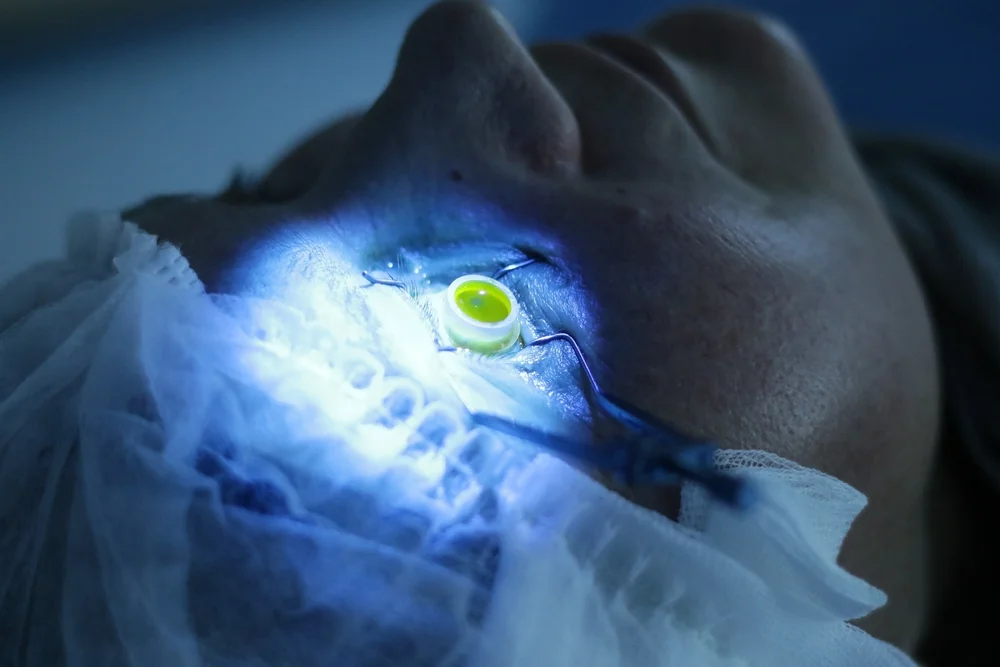
Request an Appointment
In Keratoconus
Surgical Approaches
Corneal Cross-linking
Corneal cross-linking (CXL) has emerged as a game-changing procedure in the world of ophthalmology and has benefited many keratoconus patients. This innovative treatment aims to strengthen the cornea, prevent further deterioration and stabilise the condition.
The Scientific Fact Behind CXL
Corneal cross-linking involves the use of ultraviolet (UV) light and riboflavin (vitamin B2) eye drops. When exposed to UV light, riboflavin forms chemical bonds within the cornea, increasing its structural integrity, further strengthening the cornea. This process effectively stops the progression of keratoconus and may even improve the shape of the cornea.
What is the Procedure Like?
The CXL procedure is an outpatient procedure that typically takes about an hour. After numbing the eye with local anaesthetic eye drops, the ophthalmologist applies riboflavin drops to the cornea. The eye is then exposed to UV light. Patients may experience temporary discomfort during the procedure, but the benefits far outweigh the immediate discomfort.
Post Procedure Period
After CXL, patients may experience light sensitivity and mild discomfort for a few days. Protective lenses are usually recommended to protect the eyes during this initial recovery period. Most people can resume normal activities within a week and gradual improvements in vision become apparent over the following months.

Keranatural – CAIRS
Main Features of Keranatural:
- It is a keratoconus treatment using allograft corneal tissue, commonly called CAIRS, which is added to the bulbous layer in the form of a patch.
- Produced by Vision Gift, an eye bank in the USA; tested, sterilised and packaged.
- Traditional ‘corneal ring therapy’ is biosynthetic material, Keranatural is human corneal tissue.
- It takes much shorter time than corneal transplantation (10-15 minutes).
- You can return to normal life the next day after the procedure, you can go to work or travel.
- There are personalised treatment plans, rarely in the second step, adjustments are made like a tailor according to the response of the eye.
- The procedure is reversible, you can return to your untreated state in just minutes.
- The procedure is performed painlessly in the laser operating theatre, anaesthetised with drops.
- No tissue is cut out of the eye, only the tunnel opened with the laser is added.
- Improved vision after the operation.
- The goal is never to reset the numbers of keratoconus patients, or to free them from glasses.
- Patients have a good chance that their vision will improve with glasses or contact lenses, or that they will be completely free of glasses or contact lenses.
Curious Points About Keranatural
- Reduces Foreign Body Reactions: Keranatural involves the insertion of a sterilized and tested human corneal segment that is not considered a foreign body. This reduces the chance of foreign body reactions.
- Surgical Procedure: The procedure is relatively comfortable and is performed with a laser to create a corneal tunnel in 6-8 seconds. Collagen implantation takes only a few minutes and the entire process is performed under topical anesthesia. No Stitches Unlike some other corneal surgeries, CAIRS typically requires no stitches. This contributes to a faster healing process.
- Fast Recovery: Patients can usually return home immediately after the procedure, with a follow-up visit the next day.
- Standard Risks: The overall risks associated with CAIRS are comparable to standard eye surgeries. These can include the risk of infection, which is typically managed through post-operative care.
- Risk of Vision Loss: The procedure is designed to be under the surgeon’s control, minimizing the risk of vision loss. The surgeon can make adjustments, rotate or remove the segment as needed, allowing the eye to return to its previous state.
Postoperative Experience
- Vision Improvement: Most patients experience an improvement in vision after the procedure. However, the degree of improvement can vary depending on the severity of the underlying corneal condition.
- Better Tolerance for Glasses or Contact Lenses: For keratoconus patients who struggle with glasses or cannot tolerate contact lenses, Keranatural aims to make these visual aids more tolerable or unnecessary.
Personalized Results
- Patient Specific Reactions: Patients’ reactions may vary depending on the severity of their corneal condition. While increased vision is generally expected, the degree of improvement varies.
In summary, Keranatural is a minimally invasive and controlled procedure aimed at improving vision for individuals with corneal conditions, particularly keratoconus. It offers the advantage of faster recovery, less discomfort and the ability to adjust treatment as needed for optimal results. However, individual reactions to the procedure can vary. It is very important that patients discuss their specific situation, expectations and any concerns with their eye care professional before undergoing CAIRS.

Why Aylin Kılıç?
Swiss Approach
in Eye Surgery

Aylin Kılıç brings the precision and quality of Swiss innovation and the warmth and generosity of Turkish hospitality to the world of eye health. She continues to improve the lives of individuals around the world with her innovative approaches, exceptional customer service and a distinctive blend of Swiss precision and Turkish hospitality.
Contact Me
You can contact me for your disease, my treatment methods and all other issues you are curious about.




